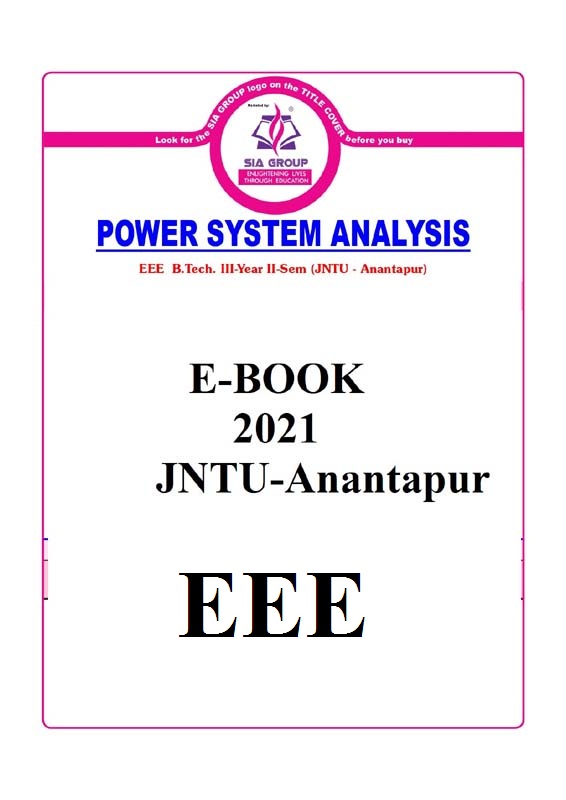

Note: Please check your Spam or Junk folder, in case you didn't receive the email with verification code.
SYLLABUS
UNIT-I
POWER SYSTEM NETWORK MATRICES Representation of Power System Elements, Essential Characteristics of a Good Algorithm, Steps Involved in Solving a Problem Using Digital Computer – Graph Theory, Definitions, Bus Incidence Matrix, Ybus Formation by Direct and Singular Transformation Methods, Numerical Problems, Formation of ZBus, Partial Network, Algorithm for the Modification of ZBus Matrix for Addition Element for the Following Cases: Addition of Element from a New Bus to Reference, Addition of Element from a New Bus to an Old Bus, Addition of Element between an Old Bus to Reference and Addition of Element between Two Old Buses (Derivations and Numerical Problems) – Modification of ZBus for the Changes in Network (Problems)
UNIT-II
SHORT CIRCUIT ANALYSIS Per-Unit System of Representation Per-Unit Equivalent Reactance Network of a Three Phase Power System, Numerical Problems, Symmetrical Fault Analysis, Short Circuit Current and MVA Calculations, Fault Levels, Application of Series Reactors, Numerical Problems. Symmetrical Component Theory, Symmetrical Component Transformation, Positive, Negative and Zero Sequence Components, Voltages Currents and Impedances, Sequence Networks, Positive Negative and Zero Sequence Networks, Numerical Problems. Unsymmetrical Fault Analysis, LG, LL, LLG Faults with and without Fault Impedance, Numerical Problems.
UNIT-III
POWER FLOW STUDIES-I Necessity of Power Flow Studies – Data for Power Flow Studies – Derivatiaon of Static Load Flow Equations – Load Flow Solutions Using Gauss Seidel Method, Acceleration Factor, Load Flow Solution with and without P-V Buses, Algorithm and Flowchart, Numerical Load Flow Solution for Simple Power Systems (Max. 3-Buses), Determination of Bus Voltages, Injected Active and Reactive Powers (Sample One Iteration Only) and Finding Line Flows/Losses for the Given Bus Voltages.
UNIT-IV
POWER FLOW STUDIES-II Newton Raphson Method in Rectangular and Polar Co-ordinates Form, Load Flow Solution with or without PV Busses – Derivation of Jacobian Elements, Algorithm and Flowchart, Decoupled and Fast Decoupled Methods, Comparison of Different Methods – DC Load Flow.
UNIT-V
POWER SYSTEM STABILITY ANALYSIS Elementary Concepts of Steady State, Dynamic and Transient Stabilities, Description of Steady State Stability Power Limit, Transfer Reactance, Synchronizing Power Coefficient, Power Angle Curve and Determination of Steady State Stability and Methods to Improve Steady State Stability, Derivation of Swing Equation, Determination of Transient Stability by Equal Area Criterion, Application of Equal Area Criterion, Critical Clearing Angle Calculation, Solution of Swing Equation by 4th Order Range – Kutta Method (up to 2 Iterations) – Methods to Improve Stability – Application of Auto Reclosing and Fast Operating Circuit Breakers.
 No Preview is available for this book
No Preview is available for this book

 Get 100 instant uPoints on the purchase of Rs.100 or above for each order.
Get 100 instant uPoints on the purchase of Rs.100 or above for each order.
CategoriesEngineering

Format PDF

TypeeBook